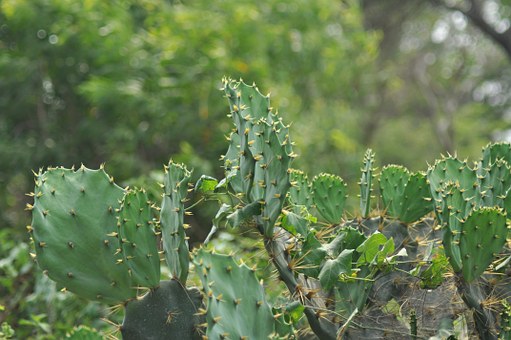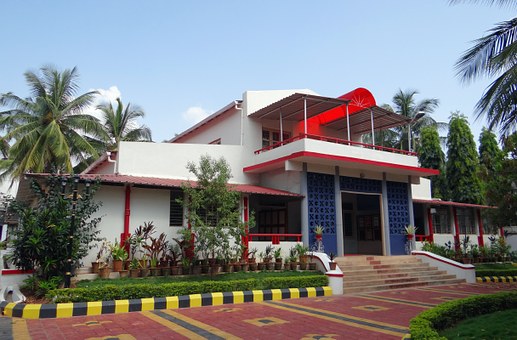Native American Wind Opportunities And Issues

Native American Wind Opportunities and Issues
Bob Gough and Pat Spears, Intertribal Council on Utility Policy (COUP)
The United States is home to more than 700 nations, tribes, bands, villages, regional corporations, and communities of indigenous peoples, from Alaska to Hawaii and the Pacific and Caribbean Islands. Native American tribes on reservation lands in the lower 48 states comprise the largest and most diverse of these indigenous peoples. Consideration of wind energy opportunities and issues for Native Americans must recognize this diversity, including cultures, histories, beliefs, relationships to surrounding communities, control of and access to resources, governmental and social organization, land tenure and jurisdiction, and energy infrastructure. This overview highlights wind energy opportunities and key issues, primarily in terms of Native American governments on the reservations in the contiguous 48 states. These opportunities and issues must be viewed in light of the unique circumstances of each group of indigenous peoples. Native American governments serve very young and rapidly growing populations within defined territories. With limited natural resources, they look toward renewable energy generation for ecologically sustainable economic development.
Native American Wind Opportunities

Tremendous Wind Resources
Sufficient wind resources are available on a majority of reservations for many local residential and commercial uses, and many have class 4 (good) to class 6 (outstanding) wind power levels that could easily support large utility-scale development. In the northern Great Plains, perhaps the richest wind regime in the world, the tribal wind power potential exceeds 300 gigawatts across six states. This is equivalent to about half of the total installed electrical generating capacity in the United States.
Federal Trust Responsibility
Native American tribes enjoy a unique legal relationship with the U.S. federal government, including a variety of federal fiduciary and trust responsibilities. Federal agencies have legal and financial obligations to assist in the assessment, protection, and development of tribal resources, and in certain cases are required to consult with tribal governments regarding federal policies and actions that may directly affect specific tribal rights and resources.
Native American Governmental Authority
Native American governments hold regulatory authority for developing and managing their resources and economies in partnerships with federal agencies such as the U.S. Department of the Interiors Bureau of Indian Affairs. Native American governments can establish utility commissions and authorities and can form governmental and commercial subsidiary entities to develop, regulate, and manage their resources. Native American organizations can be designed to meet and promote informational and commercial needs and activities under tribal and federal charters for their collective economic benefit. Native American governments can exercise permitting authority and can promulgate tribal renewable portfolio standards, net metering, and other renewable energy policies to support such development within their jurisdictions.
Aggregated Land Ownership Patterns
Native Americans hold more than 100 million acres of land in the United States, much of it open, windswept, and remote from major urban electrical load centers. Because of the small footprints of the turbines, a wind facility can be sited without interfering with farming or grazing uses. Extensive, contiguous communal land holdings can allow for greater flexibility and minimized transaction costs in sitting, placement, and permitting of wind turbine arrays for economically optimal power production.
Heightened Energy Interests
Western Native American tribes are developing a new working relationship with power marketing administrations (PMAs), such as Bonneville and Western, through the purchase of firm hydropower allocations. These federal PMAs operate integrated transmission grids that cross almost all of the western reservations and connect them to the national grid system. Tribes have a heightened awareness of reservation energy issues through both the accounting of reservation loads and the integrated planning requirements of accepting federal hydropower allocations. Tribes are becoming more aware of the value of their renewable energy resource potential.
Transmission and Green Tags
Native lands located along federally owned and operated transmission grids hold significant physical and commercial advantage for distributed tribal wind generation. This extensive distribution system could be utilized as an efficient collection system. Under a tribal green tag concept, reservation generated power can be delivered directly to a federal grid, and the environmental attributes of the wind power (the green tags) can be sold separately. PMAs can serve as a single federal purchasing agent of green energy produced by tribes to meet federal green power demand. Green tags can help overcome transmission constraints, both physically and economically. No physical delivery of the energy to remote loads would be required. This allows distant federal facilities lacking access to low-cost renewable energy to be served by the most cost-effective green power generated in the best wind regimes.
Native American Wind Issues
Need for Energy Self-Sufficiency
Although often rich in natural resources, Native American communities are the poorest in America. Their communities are likely to be the site of energy resource extraction (coal, gas, oil, uranium, and hydropower). They are likely to be limited end-use consumers of relatively higher-priced energy services, rather than the integrated participants in the overall energy economy. Native peoples are disproportionately affected by Americas energy industry relative to the benefits received from their contributions to the national energy economy. Reservation households are 10 times more likely to lack electrification than households in mainstream America, and those that do have access to electricity pay a significantly higher proportion of their household incomes.11 Native leaders have an obligation to provide for the sustainable homeland economic development of their resources for the benefit of their people. As sovereigns, they do not wish to be completely dependent on the policies, practices, and resources beyond their jurisdictions. Wind energy can provide a means for locally owned and operated renewable energy generation, ecologically sustainable development, and self determination.
Protection of Environmental and Cultural Values and Resources
Protecting tribal land and resources is a primary legal and cultural responsibility of any tribal government. Among energy development options, such as hydropower dams or coal and uranium mining, wind has the least physical impact on the local environment. This accords with cultural values of sustainability, a respect for the Earth, and a desire to minimize the manipulation and despoiling of the environment. Concerns about wind development for Native Americans involve not only an assessment of how sighting and construction may affect a communitys limited natural resources, such as plants and animals and their habitats, but also an assessment of the impact on existing cultural resources. The usual concerns about threatened and endangered species are taken one step further to include plants and animals that are highly valued within the reservation boundaries. Disturbance to the habitat of an eagle or hawk, for example, may have a symbolic impact as well as biological implications. Disturbance to hillsides or ridges on the reservation may disrupt unique historical sites, religious beliefs, and cultural and spiritual practices. Native American control of development, particularly the siting process, offers greater protection for burials and sacred sites (which are often located on hilltops and ridges) and other valued cultural resources, such as medicine plants and revered places. Native Americans have enforceable federal legal protections to many such resources within and beyond their reservation boundaries.
Project Financing
Native American peoples and renewable energy technologies are new kids on the energy industry block. Most Native American communities do not provide their own electricity. Consequently, they lack control and access to their own community as a rate base and the support of guaranteed or long-term power purchase contracts. Intermittent generation behind the meter on tribal loads, such as casinos, schools, or other facilities, may be subject to demand charges that can make an interconnected project economically unfeasible and thus unfundable.
Lack of Federal Renewable Energy Incentives
Two federal renewable incentive programsProduction Tax Credit (PTC) and Renewable Energy Production Incentive (REPI)have driven renewable energy development outside of the Native American community. Neither is directly applicable to tribal-owned development because tribal governments do not have federal income tax liabilities (a requirement for using the PTC), and tribes are not subdivisions of a state (a requirement for utilizing the REPI). Grants, Loans, and Partnerships However, Native American governments do have access to a variety of financing mechanisms, ranging from grants for demonstration projects to low-interest rural utilities service loans, loan guarantees, and tax-exempt bonding for commercial projects and for establishing power authorities as fundamental governmental services. They may participate in joint venture partnerships with other groups (Native American and non-Native American) in creative project ownerships to provide for more investment opportunities and revenue sharing. Native American groups may also lease lands to outside parties and collect rents and royalties.
Need for Infrastructure and Capacity Development
Native American communities often lack the technical training, the access to financing, and the infrastructure capacity to effectively utilize their energy resources in ways that are fully consistent with their cultural values or ways that could lead to the successful development of sustainable homeland economies. Mainstream development models based on private corporate enterprise are unlikely to flourish in the reservation context. Tribes have responsibilitiesstemming from familial relationships, social welfare obligations, and governmental responsibilitiesthat are rooted in history and culture and are often not included in the corporate business model. But tribal models building on cultural values and historical experience and operating in concert with financial and technical assistance from the U.S. government or private sources may be the best way to ensure successful and lasting tribal resource development. Native peoples can choose from a variety of models and options that support sovereignty and self-determination through economic success and environmental sustainability.
Native American Wind Development Three Keys to Tribal Success
Tribal leaders face many decisions regarding resource development. They must consider their options carefully, making the best use of their natural resources, of their existing tribal capacity and authorities, and of the available federal programs for technical and financial assistance. Recent economic development studies note that sustainable, self determined economic development requires that Native Americans build on their sovereignty. They can do this by creating culturally and historically appropriate institutions that can plan, develop, and carry out economic policies and projects to support local employment, expand businesses, and promote sustained access to capital. One study focusing on Native American economic success stories identified three keys to successful economic development:
Sovereignty: tribes make their own decisions regarding approaches to economic development and the utilization of resources
Culture: tribal decisions are made in light of the tribes historical traditions and social values
Institutions: tribes creatively design and establish culturally appropriate entities to formulate and execute business decisions that are kept separate from those involving tribal governance.
The effectiveness of federal programs is intricately linked with the ability of tribes to incorporate the programs into their economic development plans.14 In the context of renewable energy opportunities, there is a reciprocal burden to strategically shape Native American economic development projects in ways that can effectively utilize the available federal programs for the assessment and sustainable development of their renewable resources; that can gather accurate information, select appropriate technologies, and develop internal capacity to advance culturally responsive and ecologically sustainable economies; and that can creatively assess, develop, and manage their activities in the institutional environments in which new opportunities may arise.
Conclusion
Developing tribal wind resources requires 1) outstanding wind resources on tribal lands; 2) leasing, permitting, regulatory, and management authority; and 3) access to federal and private capital. Two critical areas must be addressed to support tribal wind energy generation: 1) the provision of development costs necessary in planning, environmental assessment, and financing a project; and 2) the need for policy that supports economic equity in the provision of wind power for reservation housing and facility loads and access to off reservation markets without excessive demand and transmission costs by public and private entities. The solutions to these problems lie in a broad understanding of the issues by tribal, federal, state, and business leadership. This understanding will allow the use of clean wind energy in an equitable blend of true costs in a sustainable economy.

protection inspection
products horizontal
faq miller
by: joe thorton Retail And Commercial Leases Act 1995 In South Australia Holiday Budgeting Budget Travel Destinations Invaluable Systems To Avail Charleston Hotel Cheap Rooms For Hubbies Travelers And Executives A Traveler's Information To Dublin Along With Feasible Recommendation On Finding Boutique Hotels India Tour Picking The Top Holiday Spot Ideas For Wedding Stripes For A Unique Wedding Design Bushnell Tour Rangefinder - Using the Tools you need for a Better Golf Score! The Best Bars In The World - Temperance Hotel, Melbourne, Australia - Review Plan a Holiday in India Unique Viking Costumes Ideas For Halloween The Hays Travel Independence Group (IG)